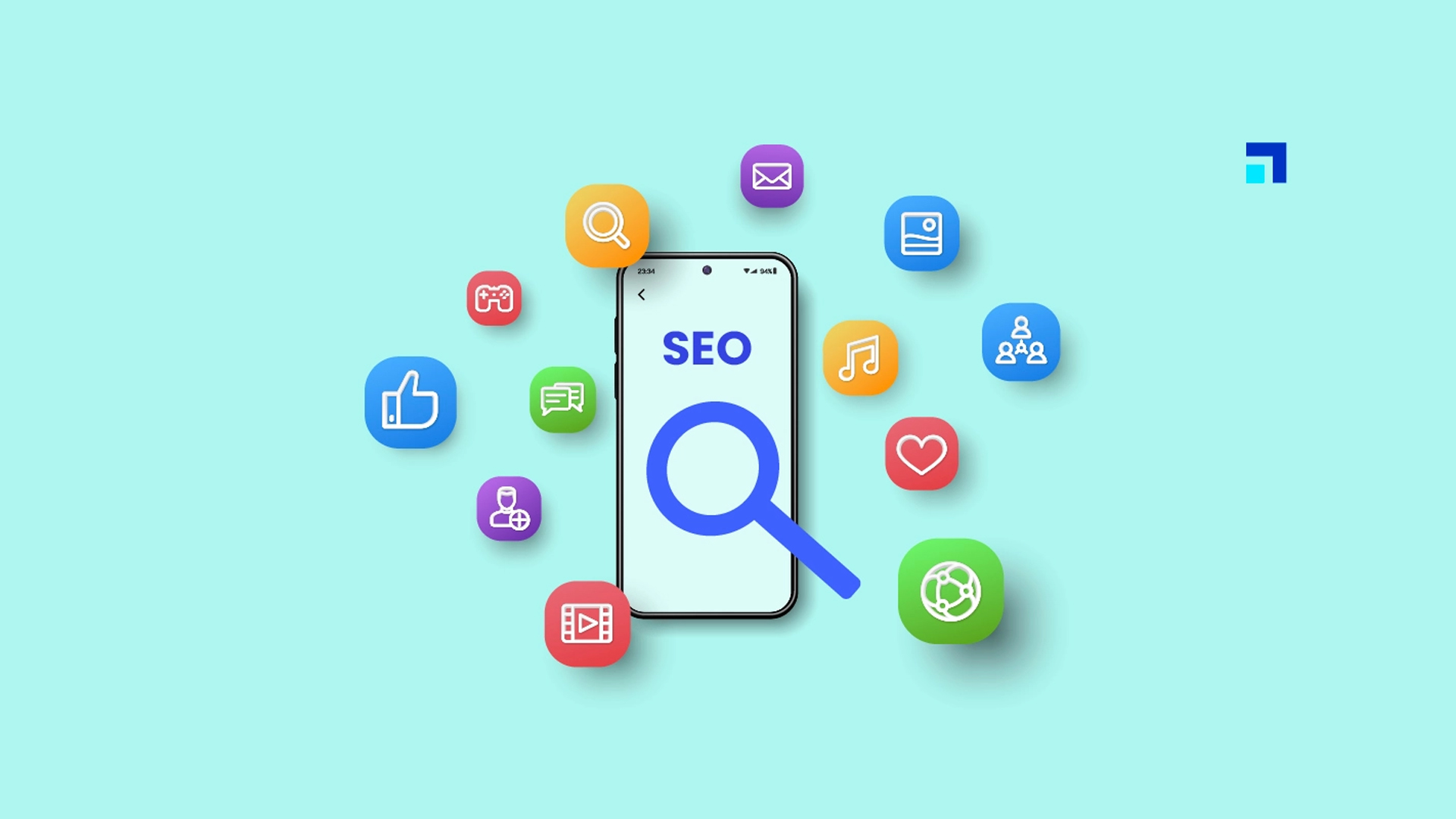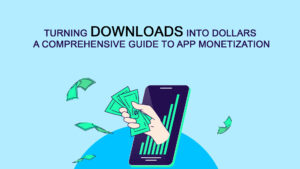Beyond the Build: Mastering App Store Optimization (ASO) for Discoverability and Downloads
You’ve poured your heart and soul into developing a groundbreaking mobile app, ensuring a seamless UI/UX, robust features, and impeccable code. But in the colossal digital marketplace of the Apple App Store and Google Play Store, simply launching your app is like whispering in a hurricane. With millions of apps vying for attention, how do you ensure your masterpiece gets discovered, downloaded, and cherished by your target audience? The answer lies in App Store Optimization (ASO).
Think of ASO as SEO for your app. It’s the strategic process of improving your app’s visibility within app stores and increasing conversion rates (turning app page views into downloads). In 2025, with competition fiercer than ever, mastering ASO is not just an advantage – it’s a fundamental necessity for any app aspiring to success.
This comprehensive guide will demystify App Store Optimization, walking you through its core components, essential strategies for both iOS and Android, critical tools, and the evolving trends shaping the future of app discoverability.
Why ASO is the Unsung Hero of App Marketing
In an app economy driven by discoverability, ASO plays a pivotal role for several compelling reasons:
- Dominant Discovery Channel: A significant percentage of app downloads (often over 60-70%) still come directly from app store searches. If users can’t find your app, they can’t download it.
- Organic Growth: ASO focuses on organic visibility, meaning you’re attracting users who are actively searching for solutions your app provides, leading to higher quality downloads and better retention.
- Cost-Effectiveness: Compared to paid advertising, ASO is a highly cost-effective long-term strategy for user acquisition. Once optimized, it continues to deliver results without recurring ad spend.
- Improved Conversion Rates: A well-optimized app listing with compelling visuals and clear messaging convinces users to download once they find your app.
- Reduced User Acquisition Costs (UAC): By boosting organic downloads, ASO helps lower your overall UAC, freeing up budget for other marketing initiatives.
- Sustainable Growth: Unlike fleeting ad campaigns, strong ASO provides a consistent flow of new users, fostering sustainable growth for your app.
- Competitive Edge: In a crowded market, superior ASO can give you a significant lead over competitors with similar apps.
The Two Pillars of ASO: Visibility and Conversion
ASO is broadly divided into two interdependent objectives:
- Visibility: Ensuring your app appears in relevant search results and is discoverable through Browse, featured lists, or similar app recommendations. This is primarily driven by keyword optimization and overall app store ranking factors.
- Conversion: Convincing users to download your app once they land on your app store listing. This involves optimizing your app’s creative assets and textual descriptions to persuade potential users.
Core Components of ASO: Your Optimization Toolkit
Both Apple App Store and Google Play Store have their unique algorithms and optimization fields, but share common core components:
1. Textual Elements (Keywords & Descriptions)
These are crucial for visibility, informing the app stores what your app is about.
- App Name/Title:
- Impact: Most heavily weighted factor for search ranking.
- Strategy: Include your most critical, high-volume keywords. Keep it concise, memorable, and reflective of your app’s core function. Aim for unique but descriptive.
- iOS: Max 30 characters.
- Android: Max 30 characters (short title).
- Subtitle (iOS Only):
- Impact: Highly influential for search and provides an additional opportunity for keywords.
- Strategy: Use relevant keywords and a clear, concise description of your app’s value proposition. Max 30 characters.
- Short Description (Android Only):
- Impact: Appears directly below your app name, visible without scrolling. Crucial for both visibility and conversion.
- Strategy: Include primary keywords and a compelling hook that highlights your app’s key benefit. Max 80 characters.
- Keyword Field (iOS Only):
- Impact: Dedicated field for 100 characters of keywords. Not visible to users.
- Strategy: Use a comma-separated list of keywords. No spaces between commas. Don’t repeat keywords already in your app name/subtitle. Think of singular/plural forms, synonyms, and long-tail keywords.
- Long Description (iOS & Android):
- Impact: Less direct impact on search rankings than title/keywords, but vital for conversion. Provides detailed information about your app.
- Strategy: Use storytelling to highlight features, benefits, and use cases. Incorporate relevant keywords naturally within the text. Use bullet points, emojis, and clear formatting for readability. For Android, repeating keywords 3-5 times can help.
- iOS: Up to 4000 characters.
- Android: Up to 4000 characters.
- Promotional Text (iOS Only):
- Impact: A temporary text field at the top of your app page, updateable without a new app version. Not indexed for search.
- Strategy: Use for announcements, limited-time offers, new features, or seasonal messages. Max 170 characters.
- Developer Name:
- Impact: Can be a search ranking factor, especially for established developers.
- Strategy: Ensure it’s consistent and recognizable.
2. Visual Assets (Creative Elements)
These are paramount for conversion, capturing user attention and conveying your app’s value proposition.
- App Icon:
- Impact: The first visual impression. Crucial for recognition and click-through rates.
- Strategy: Simple, recognizable, scalable, and visually appealing. Reflect your brand. Avoid text that becomes illegible at small sizes.
- Screenshots:
- Impact: Your app’s visual storefront. Highly influential on conversion.
- Strategy: Showcase your app’s best features and UI. Use compelling captions to highlight benefits. Use all available slots. Consider A/B testing different screenshot sets. Prioritize the first few, as they’re visible in search results.
- App Preview/Promotional Video:
- Impact: The most engaging visual asset. Can significantly boost conversion by demonstrating the app in action.
- Strategy: Keep it concise (30 seconds max, often shorter for impact). Highlight key features and user benefits. Show actual in-app footage.
- iOS: Up to 3 app previews.
- Android: One promotional video (YouTube link).
- Feature Graphic (Android Only):
- Impact: A prominent banner image displayed at the top of your Google Play Store listing and used in promotional spots.
- Strategy: Visually striking, conveys your app’s core message. Often includes the app logo and a compelling tagline.
3. Other Key ASO Factors
- Ratings & Reviews:
- Impact: Heavily weighted for both visibility (app store algorithms consider quality) and conversion (social proof).
- Strategy: Encourage satisfied users to leave reviews. Respond promptly and professionally to all reviews (positive and negative). Address concerns to show you care.
- Downloads & Engagement (Retention):
- Impact: App stores reward apps with high download velocity and strong user retention, assuming they are high-quality and relevant.
- Strategy: ASO helps drive initial downloads, but long-term success depends on a great app that keeps users coming back. This is where UI/UX and consistent updates come in.
- App Updates:
- Impact: Regularly updating your app signals active development and bug fixing to both users and app stores, positively impacting rankings.
- Strategy: Release updates with new features, bug fixes, and performance improvements. Announce updates clearly in your “What’s New” section.
- Category:
- Impact: Helps users find your app when Browse and informs the app stores about your app’s core purpose.
- Strategy: Choose the most relevant primary category. For iOS, you can also select a secondary category.
- In-App Purchase Promotion (iOS Only):
- Impact: Highlight specific IAPs directly on your app page, increasing visibility for monetization.
- Strategy: Showcase popular or new IAPs to entice purchases.
The ASO Process: An Iterative Journey
ASO is not a one-time task; it’s an ongoing, iterative process:
- Keyword Research:
- Brainstorm relevant keywords (features, benefits, competitors, synonyms).
- Use ASO tools (see below) to analyze keyword volume, difficulty, and relevance.
- Identify short-tail (broad) and long-tail (specific) keywords.
- Localization: Translate and localize keywords for different markets
- Competitor Analysis:
- Analyze competitor app listings, keywords, and creative assets.
- Identify their strengths and weaknesses to find opportunities for differentiation.
- App Store Listing Optimization:
- Apply your researched keywords to your app name, subtitle/short description, keyword field, and long description.
- Design compelling icons, screenshots, and videos.
- A/B Testing (Google Play Store and third-party tools):
- Test different icons, screenshots, videos, and short descriptions to see which variations lead to higher conversion rates. This is crucial for data-driven optimization.
- Monitoring & Analysis:
- Track keyword rankings, download trends, conversion rates, and user reviews.
- Use app store analytics (App Store Connect, Google Play Console) and third-party ASO tools.
- Iteration & Refinement:
- Based on data, continuously refine your keywords, descriptions, and creative assets. ASO is a marathon, not a sprint.
ASO for iOS vs. Android: Key Differences
While principles are similar, execution differs:
- iOS (App Store):
- Keyword Field: Unique 100-character field. Crucial for search.
- Subtitle: 30 characters under the name. Another keyword opportunity.
- Promotional Text: Temporary announcements without update.
- Localization: Requires separate keyword sets for each language/region.
- App Previews: Up to 3 videos.
- Android (Google Play Store):
- Short Description: Highly visible 80-character field for keywords and conversion hook.
- Long Description: Stronger weighting for keywords (repeat 3-5 times naturally).
- Feature Graphic: Prominent banner image.
- Promotional Video: Single YouTube link.
- A/B Testing (Store Listing Experiments): Built-in tool for robust testing of listing elements.
- Reviews & Ratings: More prominent role in ranking.
Essential ASO Tools for 2025
- App Store Connect (Apple) & Google Play Console (Google): Official analytics dashboards providing insights into downloads, rankings, and crash data. Essential for monitoring.
- ASO Tools (Paid):
- Sensor Tower: Comprehensive ASO platform for keyword research, competitor analysis, market intelligence, and tracking.
- AppTweak: Another powerful ASO tool with advanced features for keyword optimization, creative A/B testing, and competitive intelligence.
- ASOdesk: Offers keyword research, organic installs insights, and competitor analysis.
- Mobile Action: Provides ASO intelligence, competitor benchmarks, and keyword insights.
- Keyword Research Tools (Free/Paid):
- Google Keyword Planner: For broader keyword ideas.
- Google Trends: To identify trending topics.
- Native App Store Search Suggestions: Type in keywords directly into the app stores to see what suggestions populate.
Emerging Trends in ASO (2025 and Beyond)
The ASO landscape is dynamic, with several trends shaping its future:
- Visual ASO Dominance: With increased focus on video and interactive elements, optimizing creative assets will become even more critical than ever. High-quality screenshots and compelling videos will be non-negotiable.
- Hyper-Personalization and Contextual Discovery: App stores may leverage AI to offer more personalized app recommendations based on user behavior, installed apps, and real-time context, making keyword targeting more nuanced.
- Voice Search Optimization: As voice assistants (Siri, Google Assistant) become more prevalent, optimizing app names and descriptions for natural language queries will gain importance.
- Privacy-First ASO: With stricter privacy regulations, the availability of certain data points for targeting and analysis might change, requiring ASO strategies to adapt.
- Gamification of App Stores: App stores may introduce more interactive elements or challenges that influence discoverability and engagement.
- Subscription Optimization: For subscription-based apps, optimizing app store listings to highlight subscription benefits and trial offers will be crucial for conversion.
- Localization Beyond Language: ASO will increasingly move beyond just language translation to cultural and regional nuances in visuals, messaging, and even feature highlights.
- AI-Powered ASO Tools: Expect more sophisticated AI-driven ASO tools that can predict keyword performance, suggest optimal creatives, and even automate parts of the optimization process.
- Integration with Wider Marketing Funnel: ASO will be seen as an increasingly integral part of the overall marketing strategy, working in conjunction with paid acquisition, PR, and social media.
Conclusion
In the vast ocean of mobile applications, App Store Optimization is your compass and sails, guiding users to your digital shores. It’s an ongoing commitment to understanding user search behavior, leveraging strategic keywords, and presenting a visually compelling narrative.
By diligently optimizing your app’s listing for both visibility and conversion, embracing data-driven decision-making, and adapting to the evolving trends in the app store ecosystems, you can significantly enhance your app’s discoverability, attract a loyal user base, and ultimately, transform your passion project into a resounding success story in 2025 and beyond. Don’t leave your app’s fate to chance – master ASO and empower it to shine.




